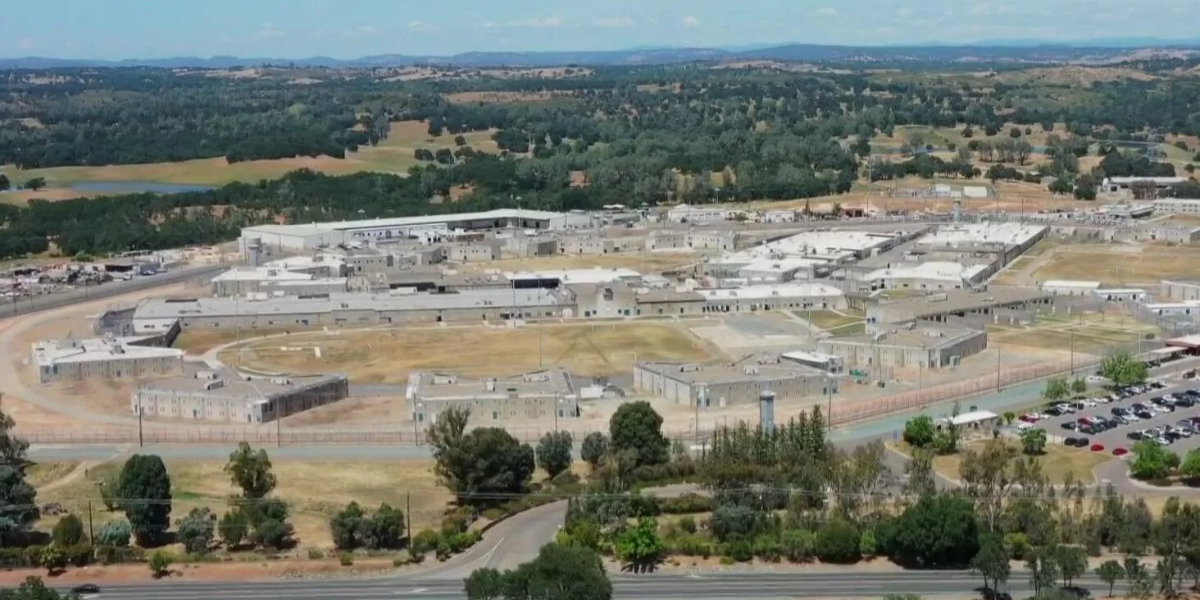The California Department of Corrections and Rehabilitation (CDCR) is facing mounting pressure to reevaluate its longstanding family visitation program after two women were killed during conjugal visits at Mule Creek State Prison within a span of five months last year.
The women—47-year-old Tania Thomas and 52-year-old Stephanie Dowells—died during separate visits with their incarcerated partners, both of whom are serving life sentences for violent crimes. Their deaths, both ruled homicides, have ignited concerns over the safety and oversight of a program that, until now, had largely flown under the radar of public scrutiny.
A Fatal Visit: The Death of Tania Thomas
Tania Thomas arrived at Mule Creek on June 28, 2024, for a scheduled four-day conjugal visit with her partner, Anthony Curry. Curry, currently serving a life sentence for attempted murder and carjacking, was the last known person to see Thomas alive.
According to the Amador County coroner’s report, Thomas was last seen around 8 p.m. on June 30, when she was escorted to retrieve her nightly medication. By early morning the next day, Curry contacted correctional officers, claiming Thomas was experiencing a medical emergency. Despite immediate response efforts, she was pronounced dead on July 1.
The case remained out of the public eye for months—until a second, eerily similar death occurred at the same facility.
Second Tragedy: Stephanie Dowells Strangled During Visit
In November 2024, Stephanie Dowells visited Mule Creek for a conjugal stay with her husband, David Brinson. Brinson is serving life without parole for the 1993 murder of four men. Early one morning during their visit, Brinson contacted staff, claiming Dowells had passed out. Despite intervention from the prison’s fire department, she was declared dead shortly afterward.
A medical examiner later confirmed that Dowells had been strangled, her death officially classified as a homicide. This revelation, which only became public in March 2025, cast a glaring spotlight on the prison’s handling of these visits and the broader policy framework that allows them.
Rare But Contentious: The Nature of Conjugal Visits
California is one of only four states—alongside Connecticut, New York, and Washington—that still permit conjugal or extended family visits. These visits, often lasting up to 40 hours, are designed to maintain inmates’ familial ties and support rehabilitation by allowing private time with immediate family, including legal spouses, children, and registered domestic partners.
The units designated for these visits are set up like small apartments, offering a sense of normalcy away from the harshness of general prison life. However, visits are not granted automatically; inmates must meet strict eligibility criteria and demonstrate good behavior. Those convicted of sex offenses, inmates on death row, or those undergoing intake or disciplinary processes are automatically disqualified.
The Origins: A Complex and Controversial History
The concept of conjugal visits has deep, and at times, troubling roots in American corrections history. The first known form emerged in Mississippi at the Parchman Farm penitentiary, where the practice was racially motivated and exploitative. It wasn’t until later that states, including California, began adopting more structured programs.
In 1968, then-Governor Ronald Reagan proposed a pilot program, aiming to reinforce traditional family values and reduce same-sex sexual activity within prisons—arguments laced with both conservative and heteronormative ideologies. Over time, the policy found unexpected allies among progressive reformers who saw the potential benefits in reducing violence, supporting mental health, and aiding reintegration efforts.
California expanded the program in the 1970s, focusing on inmates close to release. Over the decades, as most states phased out such visits due to budgetary or moral concerns, California retained the practice, citing its rehabilitative value.
Balancing Risks and Benefits: Expert Perspectives
While the recent deaths have shocked the public, experts warn against hastily dismantling a program that many believe plays a critical role in prison rehabilitation.
Jorja Leap, a social welfare professor at UCLA, emphasizes that family visits can calm prison environments and reduce sexual violence. “These visits contribute to more peaceful, stable prisons,” she said. “They’re not just about the inmates. They benefit staff and the system as a whole.”
Leap acknowledges, however, that the risks must be managed more effectively. “We must evaluate who’s eligible, particularly when it comes to those with a history of violence,” she added. “These incidents highlight the importance of psychological assessments and better oversight.”
Political Fallout and Calls for Reform
Following the public disclosure of both deaths, family members of the victims have spoken out, demanding accountability from the CDCR.
“We need these stories to be heard,” said Jeanine Rojo, cousin of Tania Thomas. “There are still people visiting these prisons who could be at risk. We can’t wait for another tragedy to take action.”
Assemblymember David Tangipa, a Republican representing parts of the Central Valley, has vowed to introduce legislation aimed at reforming or potentially ending the program altogether. “Two women were murdered, and nothing has changed,” Tangipa said. “That’s unacceptable.”
Tangipa has begun gathering information and speaking with other lawmakers, hoping to form a coalition that can review the policy from both a safety and fiscal perspective. “It’s almost surreal to think that taxpayer dollars support a ‘date night’ system inside a prison,” he said, referencing claims that staff procure snacks and supplies for visits, including condoms.
The CDCR has not confirmed those claims, nor provided data on the current number of eligible inmates or the program’s cost to taxpayers.
CDCR Response and Program Status
In March 2025, the CDCR implemented a temporary pause on family visits at several facilities, including Mule Creek, citing a spike in overall prison violence. While officials deny the pause was directly linked to the deaths of Thomas and Dowells, critics argue it’s a clear sign of systemic issues.
Family visits resumed in May but were paused again shortly afterward. As of this week, they have reportedly been reinstated, though the department has not confirmed whether any new safety protocols have been introduced.
A Turning Point for Prison Policy?
The dual tragedies at Mule Creek have thrust California’s family visitation policy into a national conversation about the balance between rehabilitation and safety. As lawmakers, families, and prison officials grapple with the implications, one thing remains clear: the current system, as it stands, is under serious scrutiny.
Whether the program will survive the political fallout—or emerge reformed with new safeguards—remains to be seen. For now, the families of Tania Thomas and Stephanie Dowells are left with heartbreak and questions, determined that their loved ones’ deaths not be in vain.
“This article was written by Mathew Owen. AI tools were used lightly for grammar and formatting, but the ideas, words, and edits are all mine.”


 by
by 

